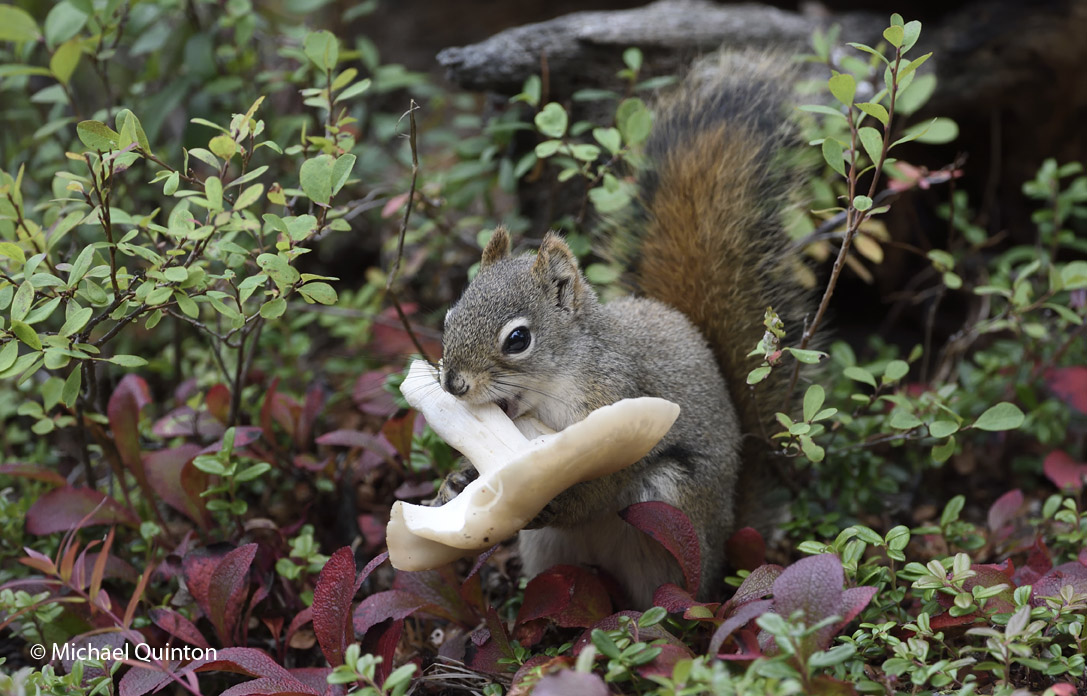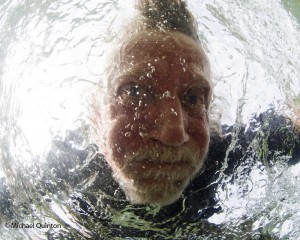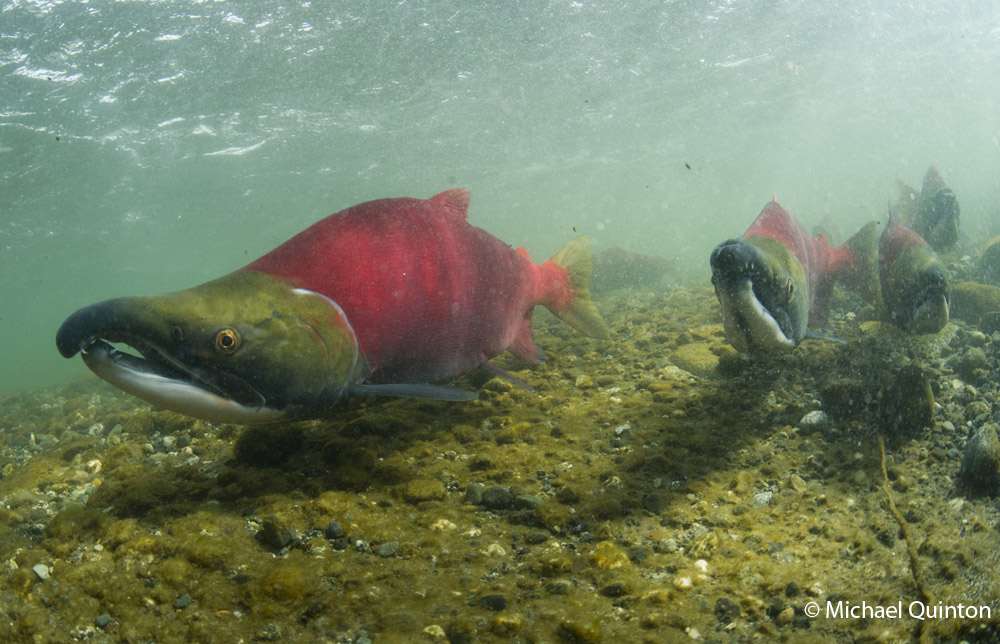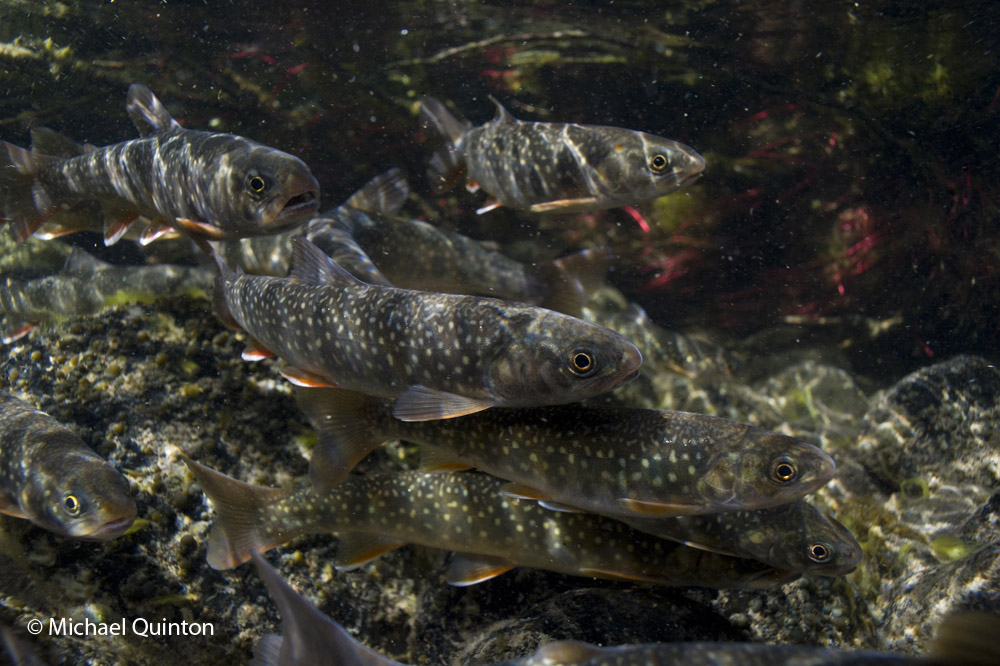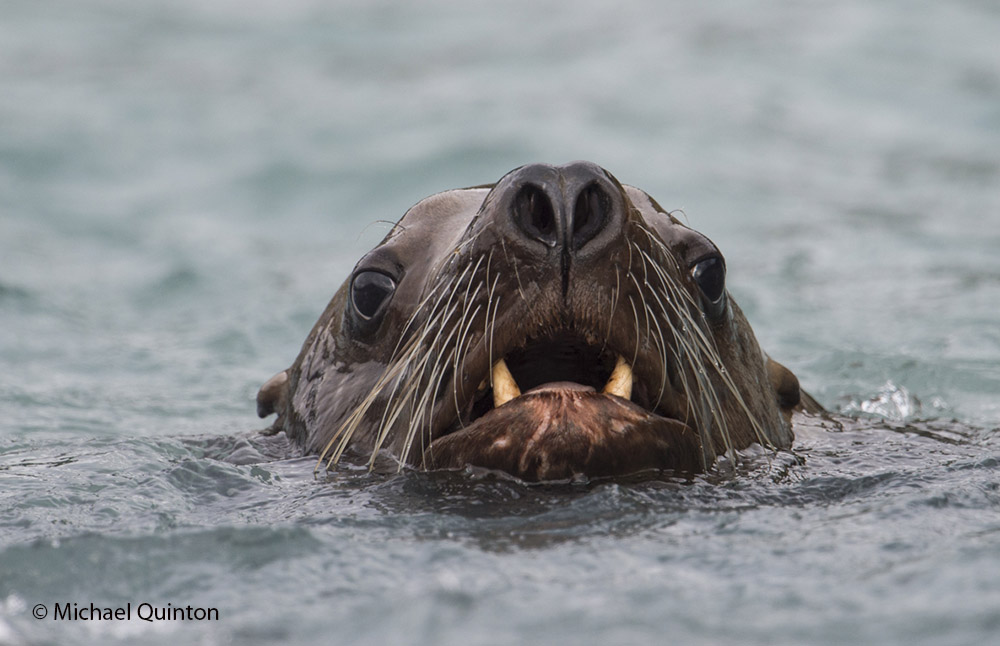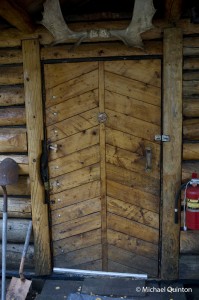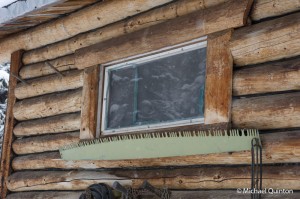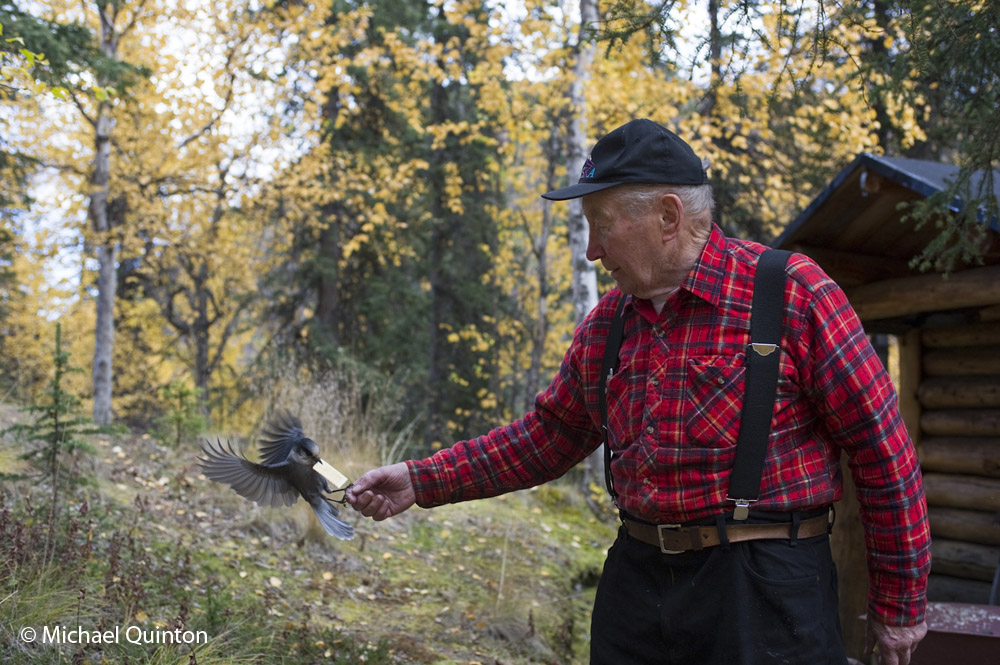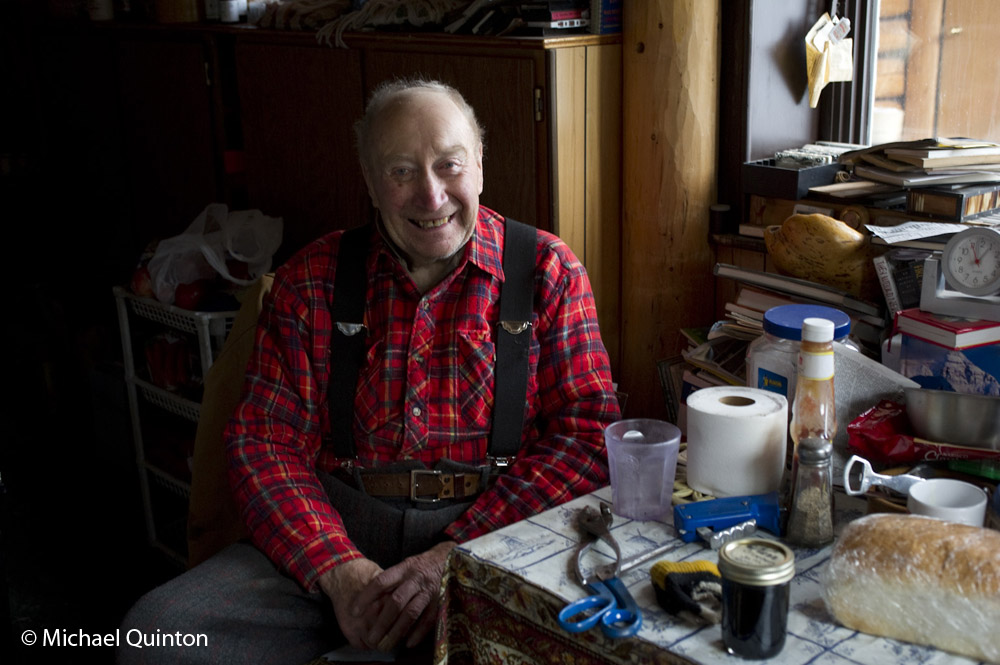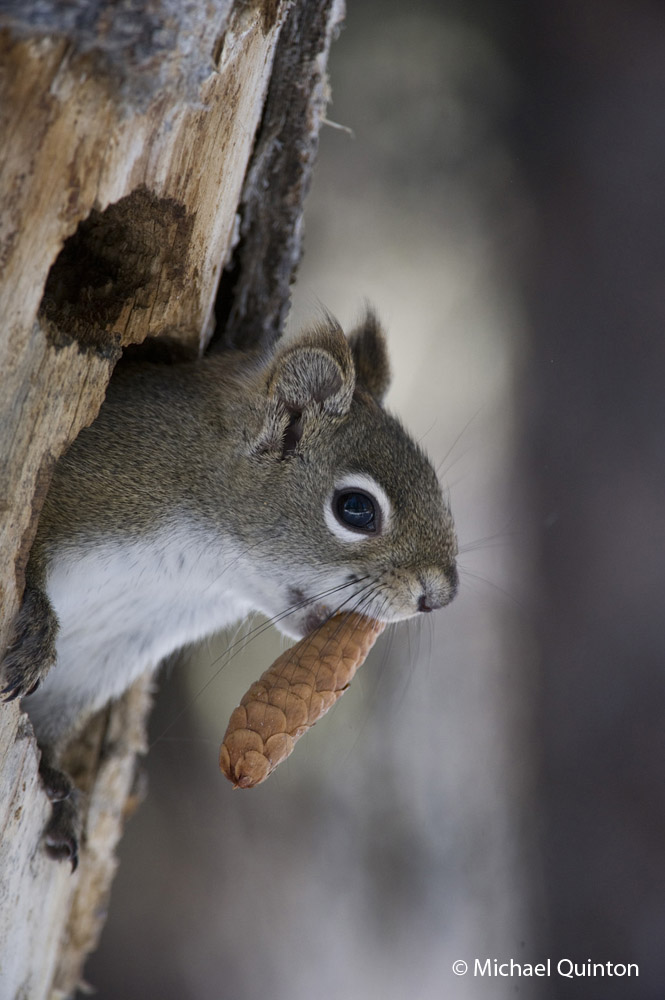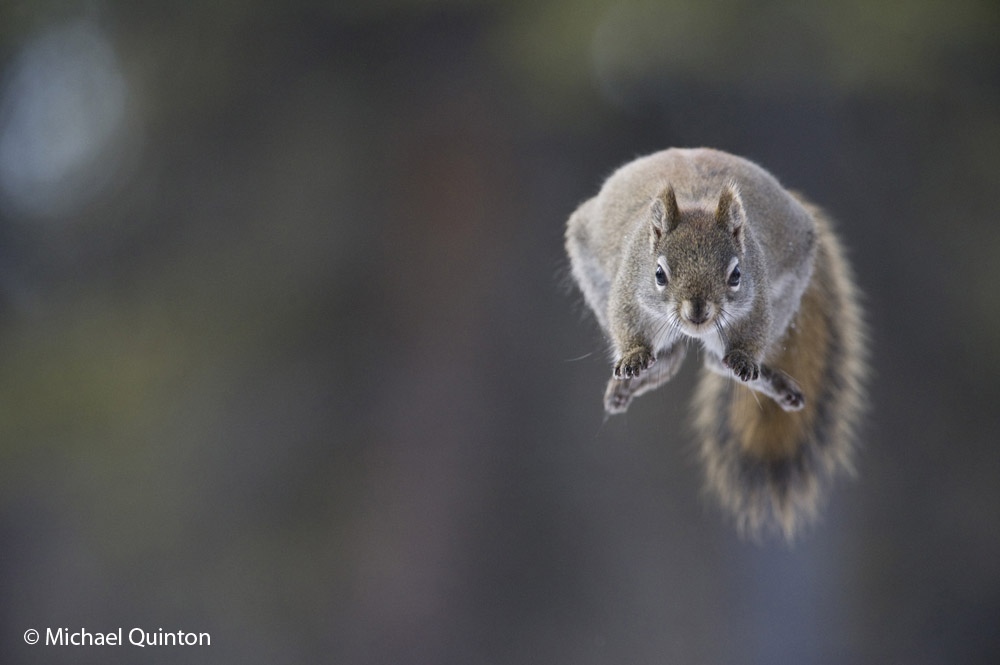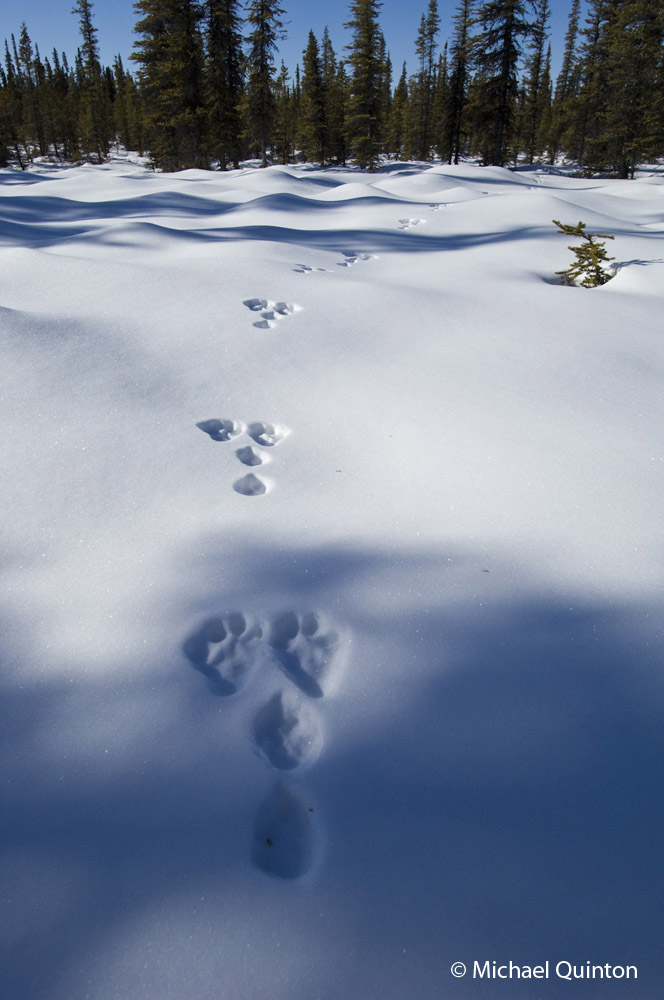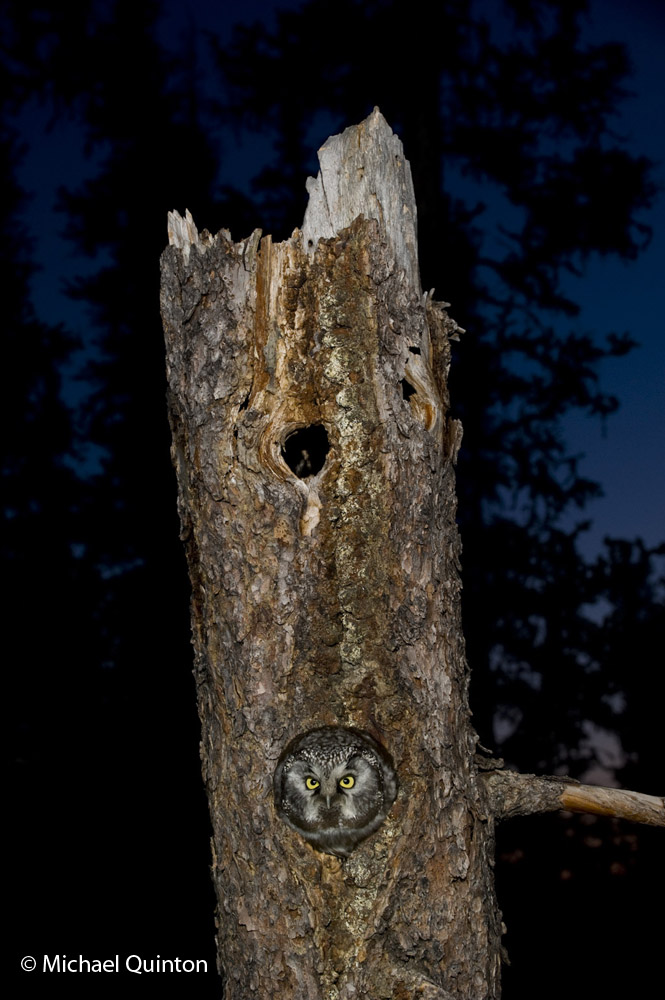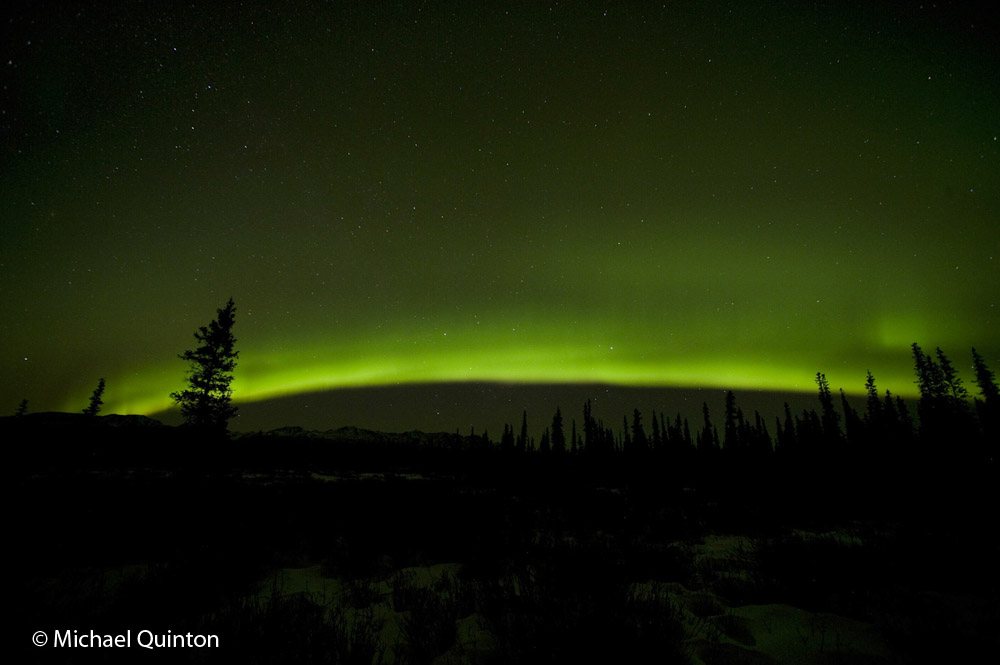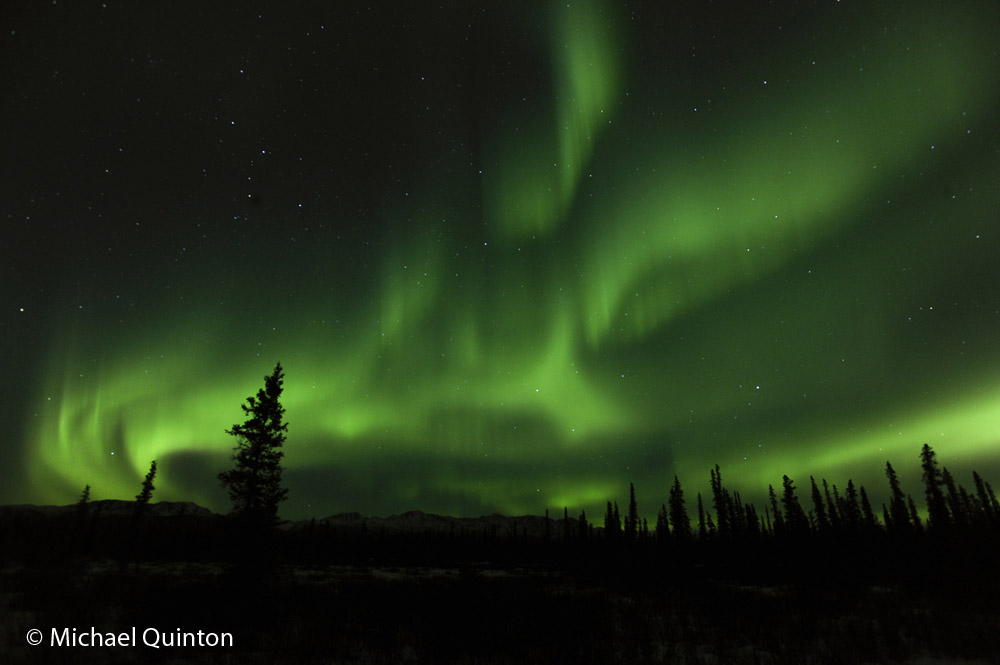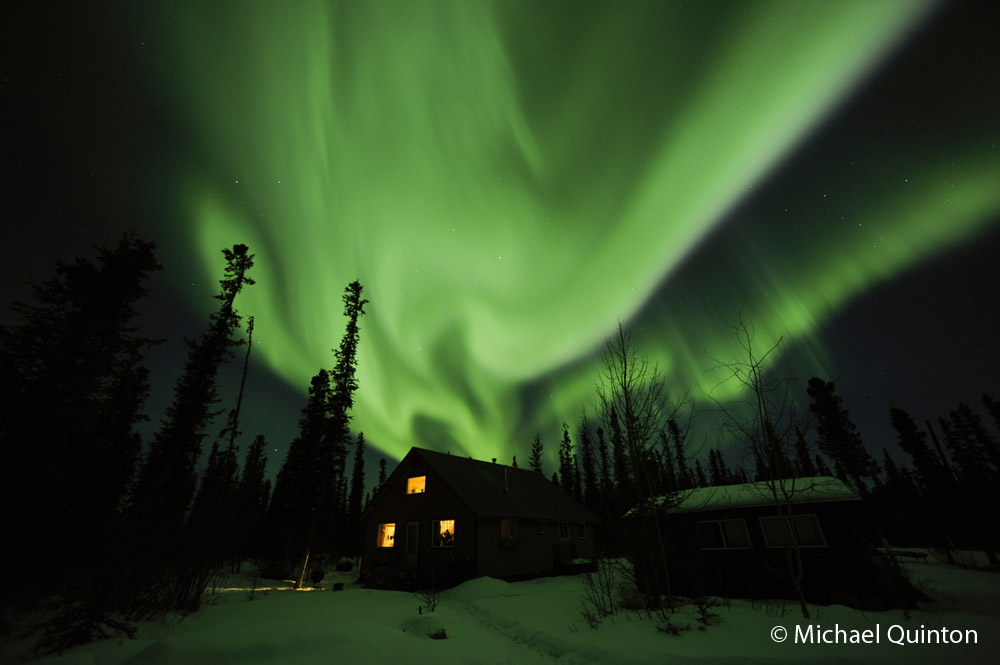Red squirrels work overtime in late summer/early fall gathering mushrooms. I spent several days this week photographing them. Though red squirrels can be a nuisance around our wilderness home I try to tolerate them. Our current red squirrel seems to be satisfied living a life in the wild so as long as he minds his own business he is on the payroll. I discourage bad squirrel behavior such as chewing on the house and if they persist, they get that one way ride up to my mean old neighbor ladies place. And she handles red squirrels just like most of my neighbors do. Continue reading
LAST DANCE OF THE SOCKEYE
Taking a peek into a tributary of the Copper River in Alaska’s interior reveals a rarely witnessed but prehistoric cycle of life. Traveling nearly three hundred miles up the Copper River through a soup of glacial silt, sockeye salmon have reached their gravel spawning beds.
Since leaving the ocean and entering fresh water, sockeye salmon undergo dramatic changes. Their silver skin turns to crimson red and their head becomes green. The male sockeye develops a wickedly hooked jawed, an aggressive attitude, and a one track mind to reproduce. Continue reading
DOLLY VARDEN
Dolly varden are not trout but a species of char. In northern Alaska “dollies”can grow to thirty inches and twenty pounds but the dwarf varieties in small interior streams (above) rarely exceed ten inches. Continue reading
STELLER’S SEA LIONS
Adult, male Steller’s sea lion on the prowl in Prince William Sound. Pink salmon, the most numerous of Alaska’s five species of salmon are schooling by the thousands just offshore. The pink salmon returning to their freshwater spawning streams are dogged by a gauntlet of predators including, harbor seals, bald eagles, killer whales and sea otters as well as Steller’s sea lions. Continue reading
HAWK OWLS ON THE MOVE
 Though unable to fly three-week old hawk owlets are ready to make the leap.
Though unable to fly three-week old hawk owlets are ready to make the leap.
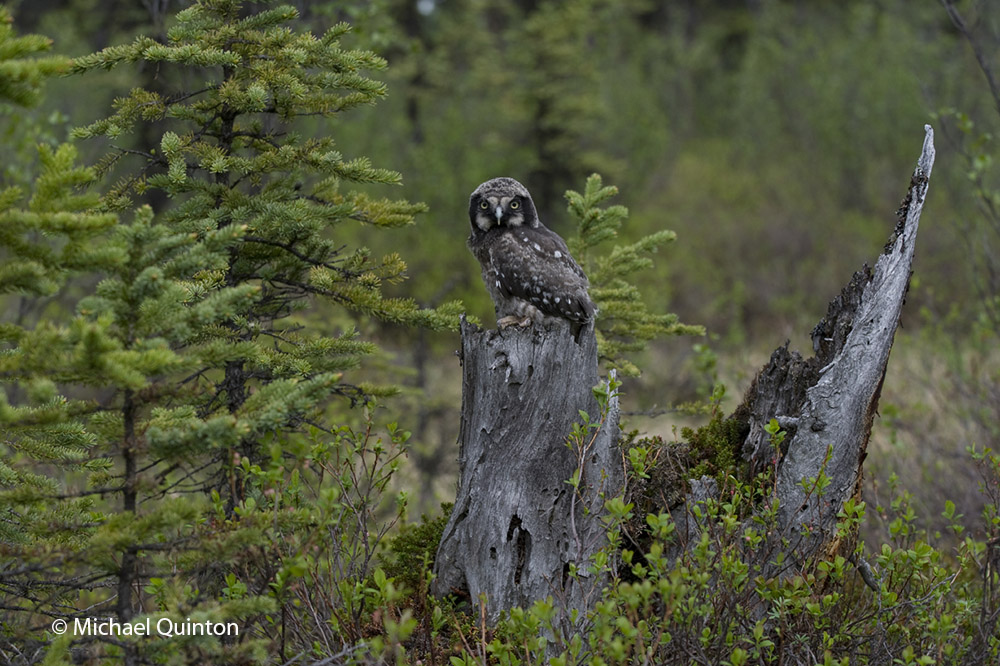 For young hawk owls the ground is a dangerous place. Continue reading
For young hawk owls the ground is a dangerous place. Continue reading
HUNTING LIKE A HAWK
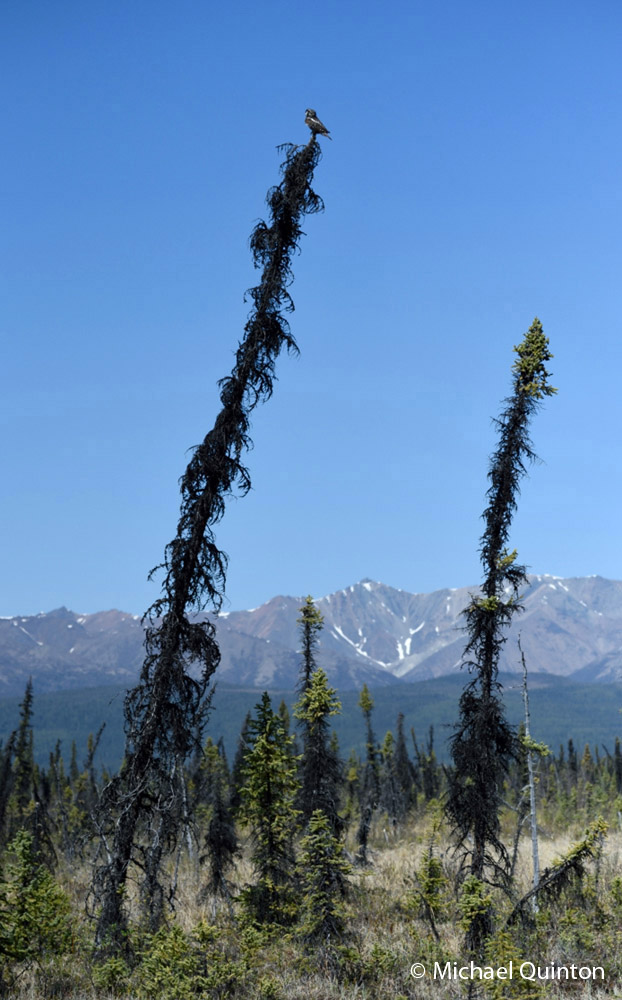 A northern hawk owl perched atop a dead, black spruce overlooking its preferred hunting grounds, an Alaskan muskeg wetland.
A northern hawk owl perched atop a dead, black spruce overlooking its preferred hunting grounds, an Alaskan muskeg wetland.
The northern hawk owl is named after its hawk-like hunting behavior. Like hawks, the hawk owl hunts by day using its keen eyesight to spot small birds and mammals. The red-backed vole is by far the most important prey species. But the hawk owl is an opportunist and other species of voles and several species of shrews are also caught. During those years when snowshoe hares are plentiful, hawk owls will add these much larger prey species to their list, as will many species of birds from the tiny, common red-poll to birds up to the size of ptarmigan. Continue reading
OWLS BY DAY, OWLS BY NIGHT
BY DAY
 Adult male northern hawk owl is active during the day.
Adult male northern hawk owl is active during the day.
For a few weeks I have been photographing a pair of northern hawk owls that have nested in a stand of tall white spruce. Hawk owl populations are cyclic and for the past three years they have been rare in my part Alaskan interior. Over the past twenty years, I have been trying to capture their little known life history. In those twenty years I have found only six or seven active nests. Continue reading
SEA OTTERS
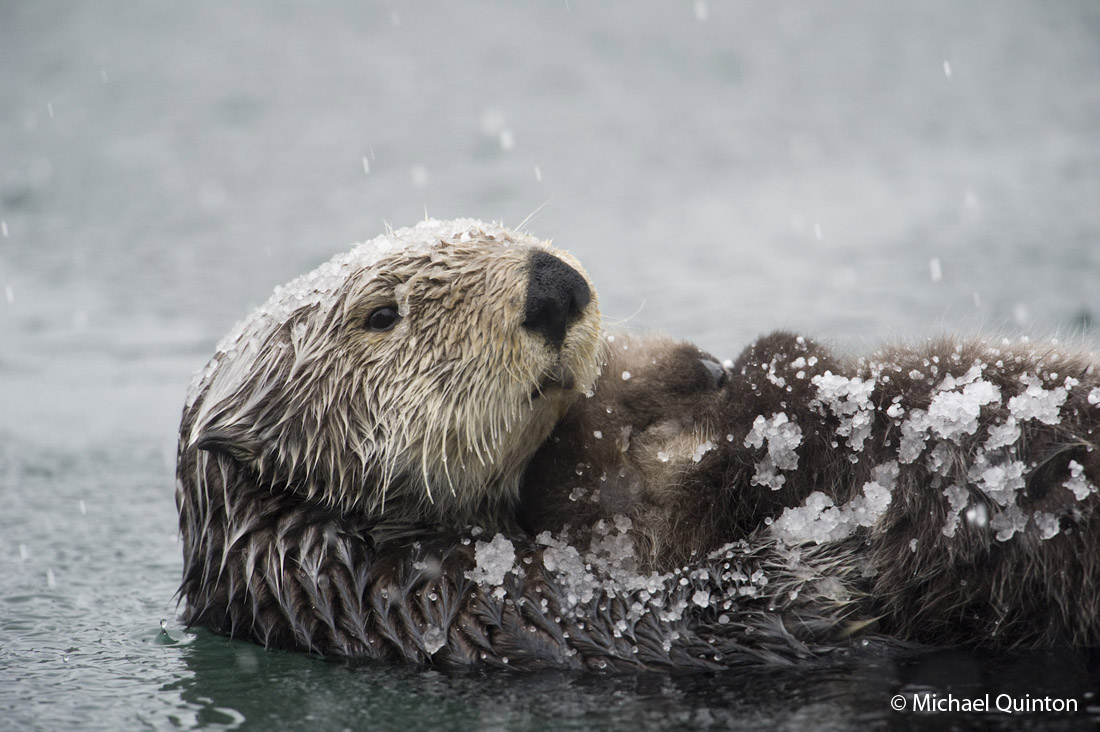 Mother sea otter snuggles her snoozing pup.
Mother sea otter snuggles her snoozing pup.
On a recent trip to photograph humpback whales in Alaska coastal waters my plans were foiled because of bad weather. High winds kept our small boat in the harbor. But these same winds presented an unexpected photo opportunity. Rough seas brought a couple dozen sea otters to a small protected bay for shelter from the storm. At first the sea otters were shy and stayed out of reach of my telephoto lens. But by hanging out in plain sight for hours each day they grew used my presence and would sometimes drift in close enough for photographs. Continue reading
FAREWELL FRED
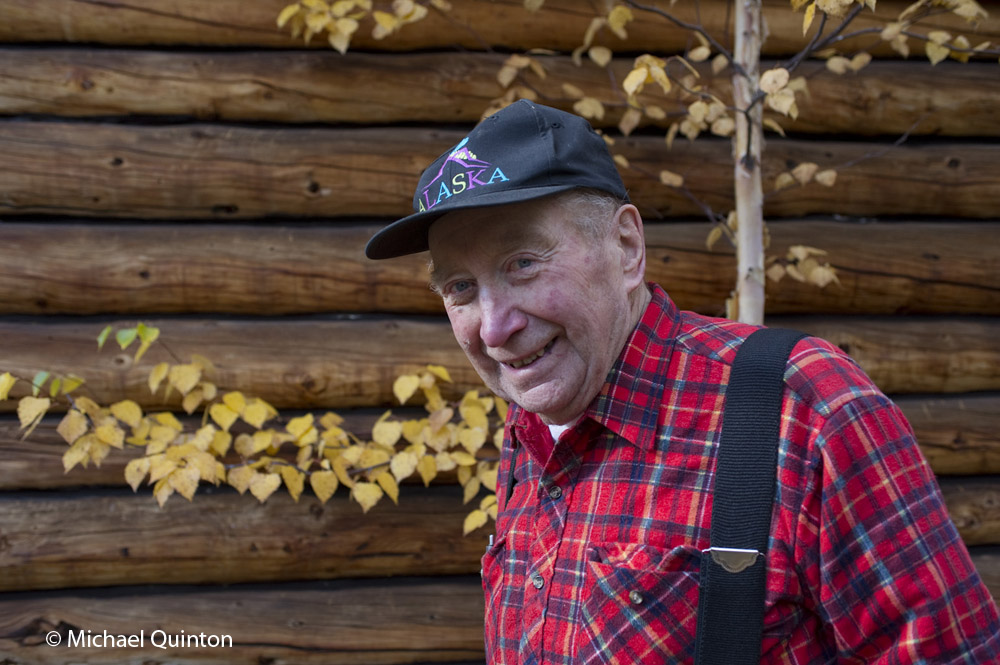 Fred Rungee at his cabin in September 2011.
Fred Rungee at his cabin in September 2011.
Fred Rungee, everyone’s favorite mountain man in these parts, passed away on March 27, 2015 after spending more than 70 years in the Alaskan wilderness. He was ninety-three. After retiring from the BLM as a fire management officer, he moved to a remote valley near Slana, Alaska and built a cabin. His cabin, “a short two and a half mile hike up the creek and then another half mile of side-hilling along the lake”, kept Fred fit and ever young at heart.
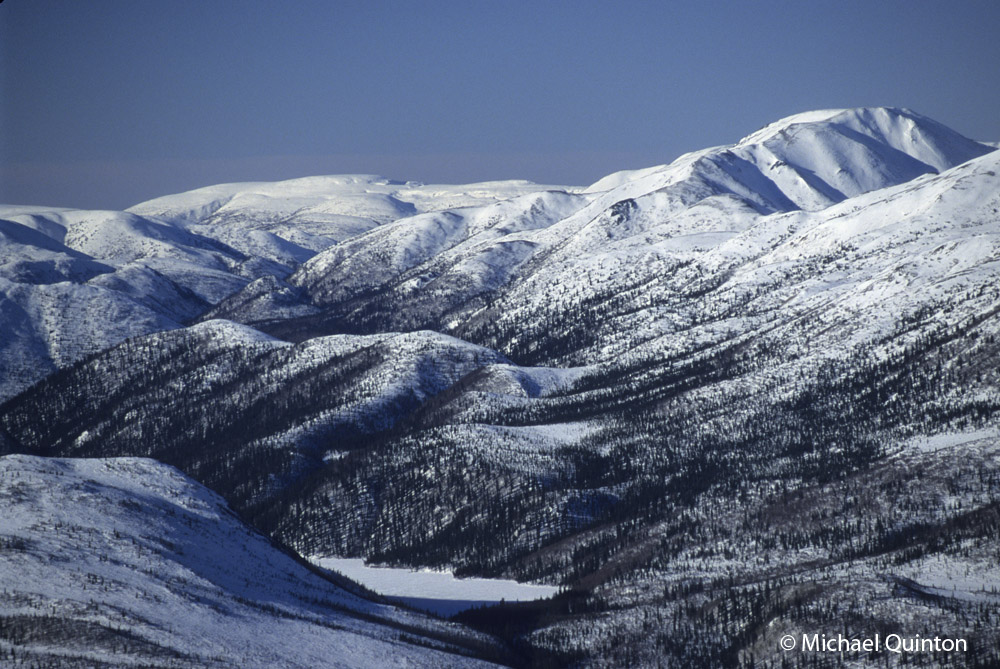 Fred’s beloved Lake in winter. He loved the solitude of those long winter months.
Fred’s beloved Lake in winter. He loved the solitude of those long winter months.
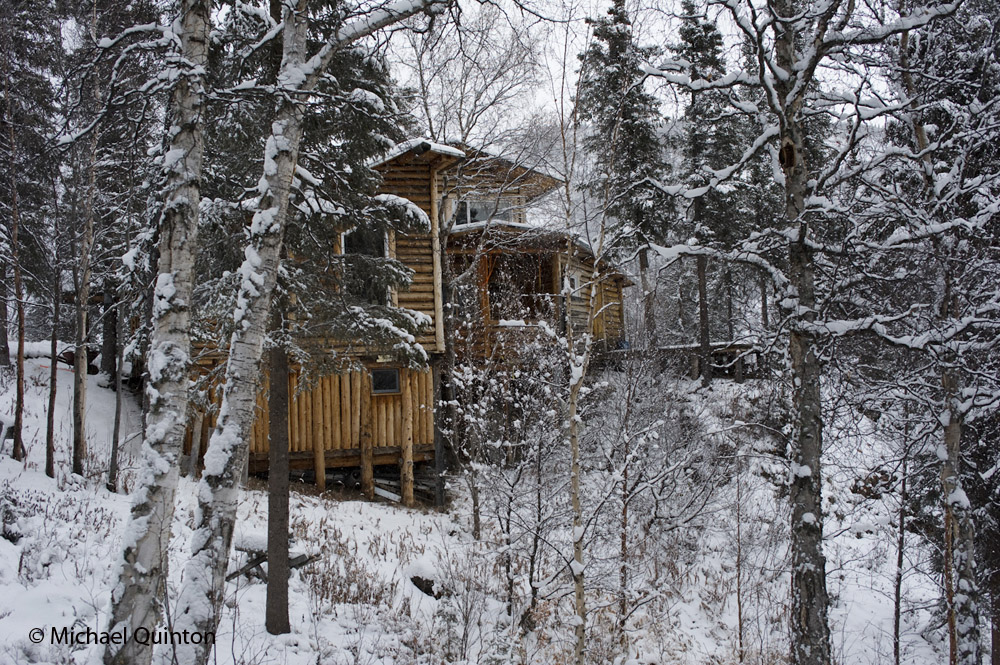 Fred’s’ cabin, perched on a bench of bedrock overlooking a wilderness lake, is bear-proof and beautiful.
Fred’s’ cabin, perched on a bench of bedrock overlooking a wilderness lake, is bear-proof and beautiful.
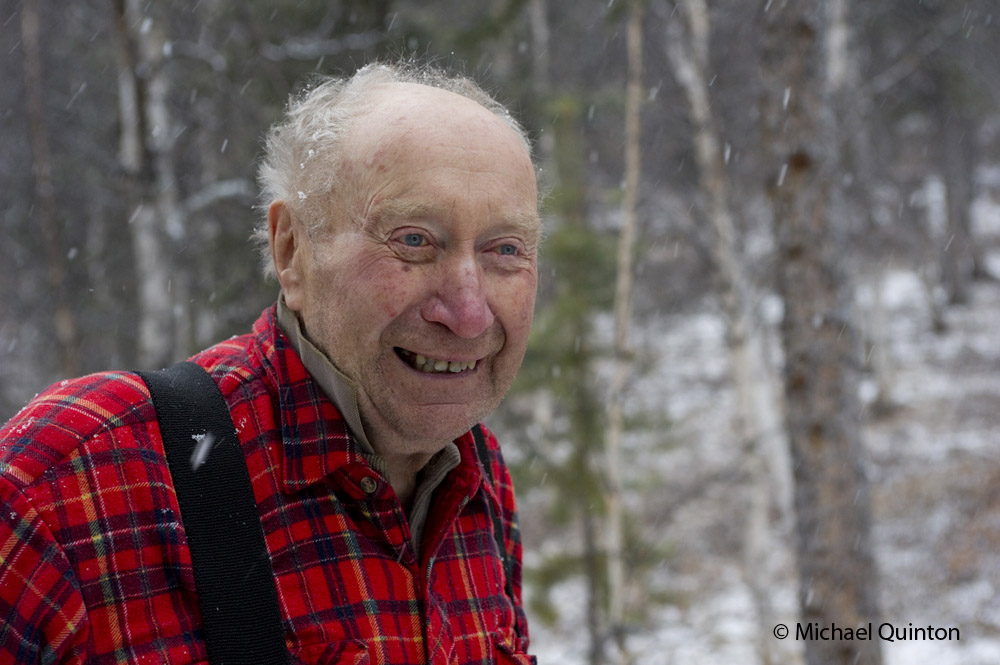 One of Fred’s’ final days at his wilderness cabin.
One of Fred’s’ final days at his wilderness cabin.
The old cross-cut saw kept the bears out of a small outbuilding.
Fred’s bear story. To listen to the audio clip, click on left side of the bar. Volume on right side.
Fred loved his gray jays.
Walking the trail near his cabin.
“Sit down and have something to eat.” Guests were always welcomed with a bite to eat. Living mostly out of tins of food, Fred claimed to have “traveled several miles” around the tops of those tin cans with a can opener.
Farewell Fred.
BACKYARD SAFARI PART 3
Red squirrel has cached black spruce cones in an old flicker hole.
RED SQUIRREL
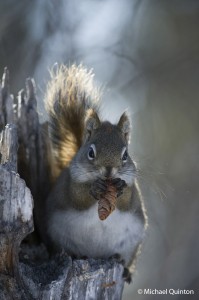 I am still on my backyard safari. This is where I do some of my favorite work. I have had professional photographers scoff at the mere suggestion of doing in-depth work with such “insignificant” species as the red squirrels, voles and the like. But I happen to enjoy photographing all species of wildlife including red squirrels. The idea of a backyard safari is to give one the incentive to compile a complete coverage of the wildlife in your immediate surroundings as well as gaining experience turning photographic potential into great photographs.
I am still on my backyard safari. This is where I do some of my favorite work. I have had professional photographers scoff at the mere suggestion of doing in-depth work with such “insignificant” species as the red squirrels, voles and the like. But I happen to enjoy photographing all species of wildlife including red squirrels. The idea of a backyard safari is to give one the incentive to compile a complete coverage of the wildlife in your immediate surroundings as well as gaining experience turning photographic potential into great photographs.
Red squirrel pry the scales off a spruce cone and feeds on the tiny seeds.
The red squirrel jumping straight on is a tough one. I found a place where the squirrel routinely jumps form one branch to another. The distance is just over three feet and it takes less than a second. The problem lies in the tiny amount of depth of field with the 560 mm telephoto lens. I use a Nikon 200-400 lens with a 1.4 tele-extender and pre-focus at about 4 meters. There is less than one inch that will be in sharp focus. I manage to get off about three frames each time the squirrel jumps and only about one in fifty photos will be in focus. What that boils down to is about one photo every four days will be a keeper. I could increase the percent of successful shots by adding a trigger which trips the shutter as the squirrel crosses a beam of infra-red light. Maybe next week.
TRACKS
One of the few sets of snowshoe hare tracks I have seen in the backyard this winter. They are currently at the low-end of their population cycle.
BOREAL OWL
The male boreal owl is still calling from the flicker holes but not every night. I suspect he is also singing his territorial songs from other possible nesting sites in the area.
The male boreal owl begins his territorial songs just before dark.
AURORA BOREALIS
The aurora borealis usually begins with a band of green, glowing light in the northeast.
Aurora begins to dance.

